
Following on from our launch-day coverage of the RX 500-series, today we analyse another RX 580. This partner card from Sapphire comes attractively priced at £239.99 which could make it a very compelling option for those in the market for a new mid-range graphics card. It does sacrifice some extra features to meet this lower price-point – including RGB LEDs – but can its performance make up for the lost bling?
Launching alongside our review of the Sapphire RX 570 Pulse 4GB card is this review of the RX 580 Pulse 8GB. If you've come straight to this review, it is worth explaining a bit about the Pulse family. Essentially, it is a new product series from Sapphire that aims to keep the solid build quality and performance we expect from Sapphire cards, while ditching some extra, less necessary, features to keep the cost down.
| GPU | AMD RX 480 | AMD RX 580 | AMD RX 470 | AMD RX 570 | AMD R9 390 |
Nvidia GTX 1050 Ti | Nvidia GTX 1060 |
| Streaming Multiprocessors / Compute Units |
36 | 36 | 32 | 32 | 40 | 6 | 10 |
| GPU Cores | 2304 | 2304 | 2048 | 2048 | 2560 | 768 | 1280 |
| Texture Units | 144 | 144 | 128 | 128 | 160 | 48 | 80 |
| ROPs | 32 | 32 | 32 | 32 | 64 | 32 | 48 |
| Base Clock | 1120 MHz | 1257 MHz | 926 MHz | 1168 MHz | Up to 1000MHz | 1290 MHz | 1506 MHz |
| GPU Boost Clock | 1266 MHz | 1340 MHz | 1206 MHz | 1244 MHz | Up to 1000MHz | 1392 MHz | 1708 MHz |
| Total Video memory | 4096 or 8192 MB | 4096 or 8192 MB | 4096 or 8192 MB | 4096 MB | 8192 MB | 4096 MB | 6144 MB |
| Memory Clock (Effective) |
1750 (7000) or 2000 (8000) MHz | 2000 (8000) MHz | 1650 (6600) MHz | 1750 (7000) MHz | 1500 (6000) MHz | 1752 (7008) MHz | 2002 (8008) MHz |
| Memory Bandwidth | 224 or 256 GB/s | 256 GB/s | 211 GB/s | 224 GB/s | 384 GB/s | 112 GB/s | 192 GB/s |
| Bus Width | 256-bit | 256-bit | 256-bit | 256-bit | 512-bit | 128-bit | 192-bit |
| Manufacturing Process | 14nm | 14nm | 14nm | 14nm | 28nm | 16nm | 16nm |
| TDP | 150 W | 185 W | 120 W | 150 W | 275 W | 75W | 120 W |
This particular RX 580 partner card has received a modest factory overclock: up to 1366MHz boost, which is an extra 26MHz over reference speeds.
It is also worth noting some of the features that the Pulse cards do not have. When compared to the Nitro+ series, features that are lacking include:
- Extra LED fans
- Dual-BIOS functionality
- RGB Sapphire logo
- NITRO Boost
- NITRO FanCheck
- NITRO CoolTech (NCT)
- Robust VRM cooling


The Sapphire RX 580 Pulse 8GB ships in a dark box, with no product photo on the front. However, there is an EKG pulse graph which obviously ties in with the Pulse name.
On the back of the box there is a list of features, as well as two product photos.
Inside, the set of accessories is quite typical: we find a driver disk, a quick-start guide, product registration information and a small manufacturer card.
If you've already read our RX 570 Pulse 4GB review, then you will be immediately able to tell that both Pulse cards are almost identical (we get to the main difference below.)
This means the RX 580 Pulse sports a matte black plastic shroud, with two 95mm fans on cooling duty. The shroud also sports the same ‘dotted' styling as the RX 570 card.
The only (visible) difference I can spot between the two Pulse cards is that the RX 580 variant has two extra 6mm heatpipes which are visible from the side of the card.
The Sapphire logo is embossed on the other side, but it is not illuminated by LEDs.
Taking the card apart confirms what we thought: there are indeed 4x6mm heatpipes (2 more than the Pulse RX 570), while the rest of the cooling solution is comprised of a copper contact area and an array of metal fins which maximise the surface area of the heatsinks. Thermal pads are also used in all the necessary places to cool VRMs and VRAM chips.
Elsewhere, the Pulse RX 580 also sports the same backplate as the RX 570. It certainly looks quite snazzy on its own, but I do think the four-way colour scheme could lead to potential colour clashes if your system has a particular colour scheme.
The RX 580 Pulse requires an 8-pin PCIe power connector, and Sapphire lists the total power draw as less than 225 Watts.
At the end of the card we get a look at some of the heat fins used to cool the GPU's core.
At the front, we can see the RX 580 has the following display outputs: 1x DVI, 2x HDMI and 2x DisplayPort.This test system is a bit different for us as we are actually using a Ryzen 7 test bed. This is for a number of reasons, but primarily we imagine many users will be considering pairing the new Ryzen processors with a new RX 500-series graphics card.
We are testing at 1080p and 1440p. We would usually include 4K results too, but for the sake of expediency we have omitted this resolution today. We also know that RX 570/580 cards are not aimed at the 4K gaming market so it is not a significant loss at all.
Test System Components
- Case: Game Max Sapphire RGB case (with 3 intake fans).
- Processor: Ryzen 7 1700 (overclocked to 3.9GHz).
- Memory: 16GB (4x4GB) PNY Anarchy 2800MHz DDR4 (operating at 2666MHz).
- Graphics Card: Variable.
- System Drive: Crucial M4 500GB SSD.
- CPU Cooler: Deepcool Captain 240 EX (pump at 12 volts, fan speed UEFI-limited to reduce noise).
- Power Supply: Seasonic PRIME Platinum 650W.
- Operating System: Windows 10 Pro 64-bit.
General Test System Notes
- AMD Graphics cards were benchmarked with the AMD (Crimson ReLive Edition) 17.4.4 driver.
- Nvidia Graphics cards were benchmarked with the Nvidia (GeForce Game Ready) 381.89 driver.
- The CPU cooler, the Deepcool Captain 240 EX, was set to a fixed low fan speed to further reduce the base noise level while the pump was left to operate at full speed since it produces no significant noise output.
- The CPU was overclocked to 3.9GHz using 1.4 Vcore.
- Each 3D benchmark or game is run 3 times at each resolution with an average result of the three runs taken as the final result for the graphs. Where benchmark screenshots are shown note these may not match the graphed figure since the graph represents the average of three while the screenshot is a single of those three values.
Comparison Graphics Cards List
- AMD RX 480 8GB (1266MHz core, 8000MHz memory)
- ASUS RX 570 STRIX Gaming OC 4GB (1300MHz core, 7000MHz memory)
- Nvidia GTX 1060 6GB Founders Edition (1506MHz core, 1708MHz boost, 8008MHz memory)
- Sapphire RX 580 Nitro+ Limited Edition 8GB (1450MHz core, 8000MHz memory)
- Sapphire RX 570 Pulse 4GB (1284MHz core, 7000MHz memory)
Software and Games List
- 3DMark
- Ashes of the Singularity
- Deus Ex: Mankind Divided
- Furmark
- GPU-Z
- Grand Theft Auto V
- Ghost Recon: Wildlands
- Sapphire Tri-XX
- Rise of the Tomb Raider
- Steam
- SteamVR Performance Test
- Unigine Heaven
3DMark is a showcase DirectX 11 benchmark designed for today’s high-performance gaming PCs. It is FutureMark’s most ambitious and technical benchmark ever, featuring real-time graphics rendered with detail and complexity far beyond what is found in other benchmarks and games today.
We run 3DMark Fire Strike (1080p) and Fire Strike Extreme (1440p).
A key battle today will be how the RX 580 Pulse gets on against the Nvidia GTX 1060. In both Fire Strike and Fire Strike Extreme, it takes an early lead. The RX 580 Nitro+ LE is faster still thanks to its higher out-of-the-box clock speed.The SteamVR Performance Test measures a system’s rendering power using a 2-minute sequence from Valve's Aperture Robot Repair VR demo. After collecting the data it determines whether a system is capable of running VR content at 90fps and whether VR content can tune the visual fidelity up to the recommended level. For machines that are not VR Ready the tool can help determine whether capabilities are bound by Graphics Card, CPU, or both.
The GTX 1060 comes out on-top in the SteamVR performance tests, though the Pulse RX 580 8GB is still fully VR capable.Unigine provides an interesting way to test hardware. It can be easily adapted to various projects due to its elaborated software design and flexible toolset. A lot of their customers claim that they have never seen such extremely-effective code, which is so easy to understand.
Heaven Benchmark is a DirectX 11 GPU benchmark based on advanced Unigine engine from Unigine Corp. It reveals the enchanting magic of floating islands with a tiny village hidden in the cloudy skies. Interactive mode provides emerging experience of exploring the intricate world of steampunk. Efficient and well-architected framework makes Unigine highly scalable:
- Multiple API (DirectX 9 / DirectX 10 / DirectX 11 / OpenGL) render
- Cross-platform: MS Windows (XP, Vista, Windows 7) / Linux
- Full support of 32bit and 64bit systems
- Multicore CPU support
- Little / big endian support (ready for game consoles)
- Powerful C++ API
- Comprehensive performance profiling system
- Flexible XML-based data structures
We set Quality to ‘Ultra’, Tessellation to ‘disabled’ and Anti-Aliasing to 2x.
Unigine Heaven follows the same trend as the SteamVR Performance test – the GTX 1060 takes top spot, followed by the Nitro+ RX 580 and then the Pulse RX 580.Ashes of the Singularity is a real-time strategy game set in the future where descendants of humans (called Post- Humans) and a powerful artificial intelligence (called the Substrate) fight a war for control of a resource known as Turinium.
Players will engage in massive-scale land/air battles by commanding entire armies of their own design. Each game takes place on one area of a planet, with each player starting with a home base (known as a Nexus) and a single construction unit.
We opt for the Extreme quality profile and run the GPU-Focused test using the DX12 game mode.
Ashes favours both RX 580 cards, and you can see that the Pulse model is only a couple of frames slower than the more expensive Nitro+ LE card.Deus Ex: Mankind Divided is set in the year 2029, two years after the events of Human Revolution and the “Aug Incident”—an event in which mechanically augmented humans became uncontrollable and lethally violent.
Unbeknownst to the public, the affected augmented received implanted technology designed to control them by the shadowy Illuminati, which is abused by a rogue member of the group to discredit augmentations completely. (Wikipedia).
We test using the Ultra quality preset and the DirectX 12 API at all resolutions.
Here we again see both RX 580 cards at the top of the charts, meaning the Pulse RX 580 beats out the GTX 1060 at both 1080p and 1440p resolutions.Tom Clancy’s Ghost Recon Wildlands is an open world tactical shooter video game developed by Ubisoft Paris. It is the tenth instalment in the Tom Clancy’s Ghost Recon franchise and is the first Ghost Recon game to feature an open world environment. Ubisoft described it as one of the biggest open world games that they have ever published, with the game world including a wide variety of environments such as mountains, forests, deserts and salt flats. The game was released on March 7, 2017 for Microsoft Windows, PlayStation 4 and Xbox One. (Wikipedia).
We test using the Very High preset.
The RX 580 Pulse wins a very tight battle with the GTX 1060 here, being no more than a single frame faster across either resolution.Grand Theft Auto V is an action-adventure game played from either a first-person or third-person view. Players complete missions—linear scenarios with set objectives—to progress through the story. Outside of missions, players may freely roam the open world.
Composed of the San Andreas open countryside area and the fictional city of Los Santos, the world is much larger in area than earlier entries in the series. It may be fully explored after the game’s beginning without restriction, although story progress unlocks more gameplay content.
We use the Ultra quality settings (or the highest alternative when Ultra is unavailable), but with MSAA disabled. The Advanced Graphics options are all set to their maximum levels.
The GTX 1060 opens up a bigger lead in GTA V 5, coming in at 6-8 FPS faster than the Pulse RX 580.Rise of the Tomb Raider is a third-person action-adventure game that features similar gameplay found in 2013’s Tomb Raider. Players control Lara Croft through various environments, battling enemies, and completing puzzle platforming sections, while using improvised weapons and gadgets in order to progress through the story. It uses a Direct X 12 capable engine.
We use the Very High quality preset and 2x SSAA at all resolutions with Direct X 12 enabled.
In Rise of the Tomb Raider, the Pulse RX 580 8GB proves to be around 4 FPS faster than its GTX 1060 rival.These sound results are not overly precise as I work in an area with high ambient noise levels. As such, don’t take these results as gospel truth, but more as a general indication of overall noise levels.
We take our measurements with the decibel meter on the top and middle section of the case, overhanging the side panel (power supply side, not motherboard tray side) by exactly 1 inch to avoid any airflow pressure coming from the exhausting AIO cooler.
I measured the sound floor to be 38 dBA, thus anything above this level can be attributed to the graphics cards. The power supply is passive for the entire power output range we tested all graphics cards in and all CPU and system fans have a fixed fan speed (25%) completely isolating them from any changes in temperature across the system.
Noise levels were measured after 5 minutes of load under three scenario: Furmark, Fire Strike and desktop idle in sequential order with 2 minutes downtime in between each test.
The Sapphire Pulse cards are some of the quietest I've tested, with the aftermarket cooler putting the reference RX 480 design to shame.
The card also idles completely silently thanks to its passive fan mode.Power consumption was measured after 5 minutes of load under three scenario: Furmark, Fire Strike and desktop idle in sequential order with 2 minutes of downtime in between each test. The measurement was taking using a Prodigit 2000MU power meter and measured for the whole system at the power supply, excluding the monitor.
Some cards have no result recorded for the Furmark test, as I found a couple of the cards underclocked themselves to avoid long-term damage, so the power consumption levels were much lower.
While I did not get a result for FurMark, the 289 Watt power draw reading taken while running 3DMark matches the figures I saw while gaming. This is higher than the reference RX 480 8GB, due to the factory overclock, and is considerably more than the GTX 1060.Temperatures were measured after 5 minutes of load under three scenario: Furmark, Fire Strike and desktop idle in sequential order with 2 minutes of downtime in between each test. GPU-Z was used to record the maximum temperature, fan profiles on GPUs were left to their default behaviour.
Some cards have no result recorded for the Furmark test, as I found a couple of the cards underclocked themselves to avoid long-term damage, so the temperature levels were much lower.
We present figures as read by GPU-Z (not deltas), and ambient temperature fluctuated between 19-20C during testing.
FurMark again did not give me usable data, but a peak of 75 degrees while running Fire Strike means the Pulse RX 580 performs similarly to other aftermarket cards we have tested previously.
Using one of our thermal imaging camera's I observed a hotspot of 72.3C. This is the area directly behind the GPU core, where there is a small backplate cut-out. The rest of the backplate stayed visibly cooler.
The RX 580 Pulse ships with a small factory overclock but I struggled to get much more out of it. In the end, I settled on 1380MHz, which is a mere +14MHz to the core. Anything further resulted in hard lockups in Fire Strike. This works out as a mere 1% frequency boost.
In Fire Strike, this overclock led to a very small bump to the graphics score, with our OC bringing a 2.8% score improvement.
It is also worth noting that I did not overclock the memory, as I was having a hard enough time trying to get stability just from adding +20MHz to the GPU core.For those looking for a brand-new mid-range graphics card, the Sapphire RX 580 Pulse 8GB looks to be a very strong contender for your money.
Its pricing is crucial, as we can currently see other third-party RX 580 8GB cards retailing for significantly more on Overclockers UK. Even Sapphire's own RX 580 Nitro+ Limited Edition costs £279.99, which is an extra £30 for very small performance improvements.
So, as RX 580 cards go this one represents very good value. Yes, we do expect overall prices to drop as the RX 400-series is phased out, but as it stands, there are not many that are as competitive as this Pulse card.
It is when compared to the GTX 1060 6GB, though, that this card really shines. In four of our five test games, the Pulse RX 580 beat out the GTX 1060, and that was across both 1080p and 1440p resolutions. We also saw victory for the Pulse RX 580 in Fire Strike and Fire Strike Extreme.
Accordingly, if it were my money, I would opt for the RX 580 based on its raw performance. The GTX 1060 does provide significantly better power efficiency levels, though, so that may be a factor for some. GTX 1060 partner cards can also be found for a bit less than this Pulse RX 580 8GB.
The last point I would mention is this card's backplate design. I said the same thing about the RX 570 Pulse card, and it still applies here: the backplate's 4-way colour scheme is likely to clash with different colour schemes, which may be off-putting to potential buyers. I know this card wouldn't work with my personal system's colour scheme, and that is important to some people.
Nonetheless, the Sapphire RX 580 8GB Pulse is an excellent value mid-range graphics card. It is overall faster than the reference GTX 1060 I tested it against, and the cost is very similar. If you're looking for an RX 580 card, this is probably the one to get – other models may have slightly faster out-of-the-box speeds, or extra features, but those cards can cost significantly more. Sapphire is onto a winner.
You can buy one for £239.99 inc. VAT from Overclockers UK HERE.
Discuss on our Facebook page, over HERE.
Pros
- Cheaper than most other RX 580 cards.
- Overall faster than the GTX 1060.
- Cool and quiet.
Cons
- GTX 1060 draws significantly less power.
- Backplate styling could be an issue for some.
KitGuru says: If you have your heart set on a RX 580, the Sapphire Pulse card is excellent. It is overall faster than the GTX 1060 and represents much better value than competing RX 580s.
 KitGuru KitGuru.net – Tech News | Hardware News | Hardware Reviews | IOS | Mobile | Gaming | Graphics Cards
KitGuru KitGuru.net – Tech News | Hardware News | Hardware Reviews | IOS | Mobile | Gaming | Graphics Cards










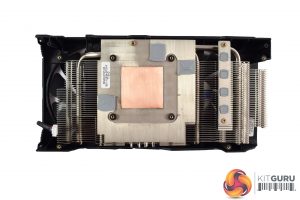


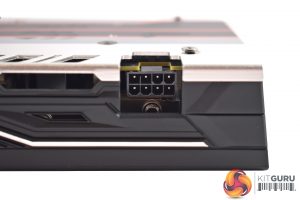







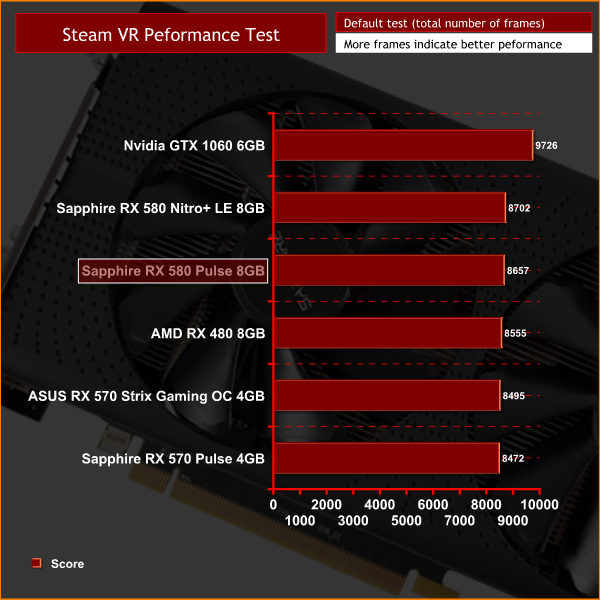




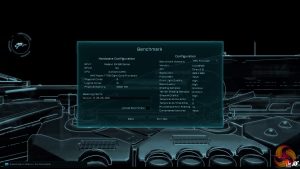












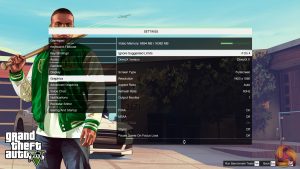






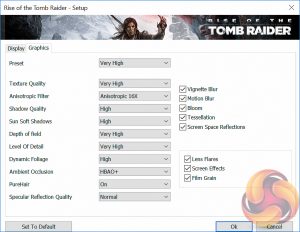

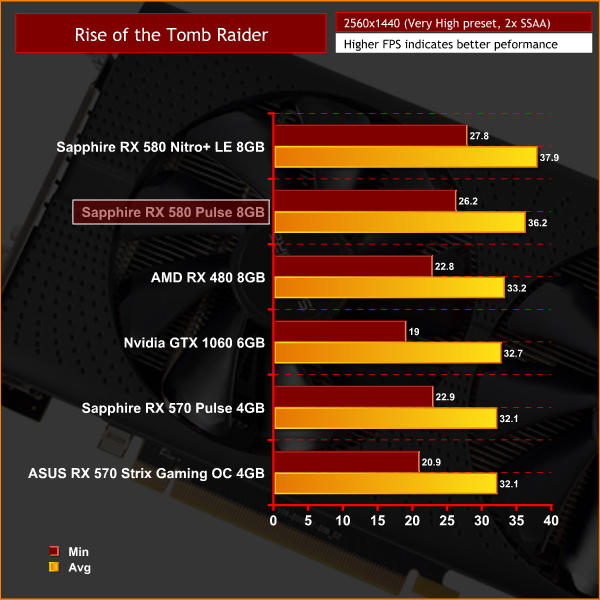









Good review as always! ;D
Great review thank you. So this card is most likely using up Sapphires remaining 480 chips hence the poor OC the card got or you just got a card that lost the chip lottery. lol
My nitro 480 is rock stable @1415/2050. So probably bad sample or issue is somewhere else.
It’s just the silicon lottery – we can rule out Sapphire re-using a 480 as the 580 is manufacturered with a modified 14nm process so the chips aren’t exactly the same. But it is still the same, overall Polaris architecture.
Yea probably just a bad sample Sapphire is a good company I own 2 TrI-X cards and they have been very solid cards and the Tri-X coolers used on their cards are very well built for sure.
Yep most likely 100% true just the Silicon Lottery and nothing else.
In a nutshell, its about as fast as a overclocked GTX980, pretty decent. Don’t forget folks that RX480/580 actually tends to OC better with lower voltages. The reasoning for not attempting a memory OC is pretty weak though, memory OCing on graphics cards is very easy and not time consuming.
You mention a £239.99 retail price but when I follow your link the card is £449.99 so almost twice this price : any thoughts on that inflation in less than a year ?